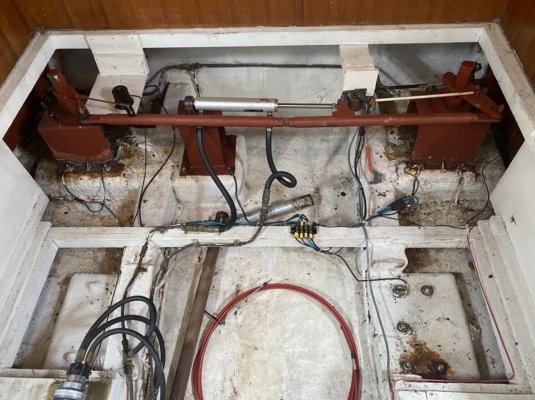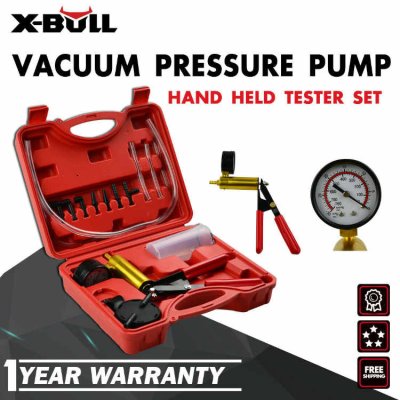socalrider
Guru
- Joined
- Feb 14, 2020
- Messages
- 1,012
- Location
- usa
- Vessel Name
- SEA WOLF
- Vessel Make
- 1979 CHB 41 Trawler
Finally got my new Raymarine autopilot installed and plumbed the pump into my hydraulic system where the old Navico pump used to live. Now I've gotta bleed the system & get it set up.
In preparation for this I learned that my Wagner 700 hydraulic ram does not have any bleed nipples (from my research they're usually opposite the hydraulic fittings). Some boats appear to have these plumbed in via a T-fitting there.
Are they necessary? A couple of people have said that one can bleed the system from the upper helm, burping the air out from the port and starboard side by just alternating lock to lock and applying a bit of extra pressure at the stops.
I've also heard running the autopilot while turning the wheel in the opposite direction works. The steering was fine before so it must be possible to bleed without these fittings!
On the one hand, I'd love to spend fewer hours running around town tracking down fittings. On the other hand, if I've already got the system open this is the time to do it. What's the TF collective wisdom on the utility of bleed fittings?
In preparation for this I learned that my Wagner 700 hydraulic ram does not have any bleed nipples (from my research they're usually opposite the hydraulic fittings). Some boats appear to have these plumbed in via a T-fitting there.
Are they necessary? A couple of people have said that one can bleed the system from the upper helm, burping the air out from the port and starboard side by just alternating lock to lock and applying a bit of extra pressure at the stops.
I've also heard running the autopilot while turning the wheel in the opposite direction works. The steering was fine before so it must be possible to bleed without these fittings!
On the one hand, I'd love to spend fewer hours running around town tracking down fittings. On the other hand, if I've already got the system open this is the time to do it. What's the TF collective wisdom on the utility of bleed fittings?


